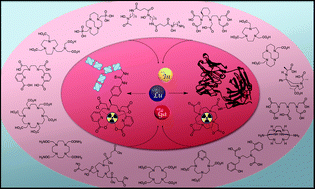Matching chelators to radiometals for radiopharmaceuticals
Abstract
Radiometals comprise many useful radioactive isotopes of various metallic elements. When properly harnessed, these have valuable emission properties that can be used for diagnostic imaging techniques, such as single photon emission computed tomography (SPECT, e.g.67Ga, 99mTc, 111In, 177Lu) and positron emission tomography (PET, e.g.68Ga, 64Cu, 44Sc, 86Y, 89Zr), as well as therapeutic applications (e.g.47Sc, 114mIn, 177Lu, 90Y, 212/213Bi, 212Pb, 225Ac, 186/188Re). A fundamental critical component of a radiometal-based radiopharmaceutical is the chelator, the ligand system that binds the radiometal ion in a tight stable coordination complex so that it can be properly directed to a desirable molecular target in vivo. This article is a guide for selecting the optimal match between chelator and radiometal for use in these systems. The article briefly introduces a selection of relevant and high impact radiometals, and their potential utility to the fields of radiochemistry, nuclear medicine, and molecular imaging. A description of radiometal-based radiopharmaceuticals is provided, and several key design considerations are discussed. The experimental methods by which chelators are assessed for their suitability with a variety of radiometal ions is explained, and a large selection of the most common and most promising chelators are evaluated and discussed for their potential use with a variety of radiometals. Comprehensive tables have been assembled to provide a convenient and accessible overview of the field of radiometal chelating agents.


 Please wait while we load your content...
Please wait while we load your content...